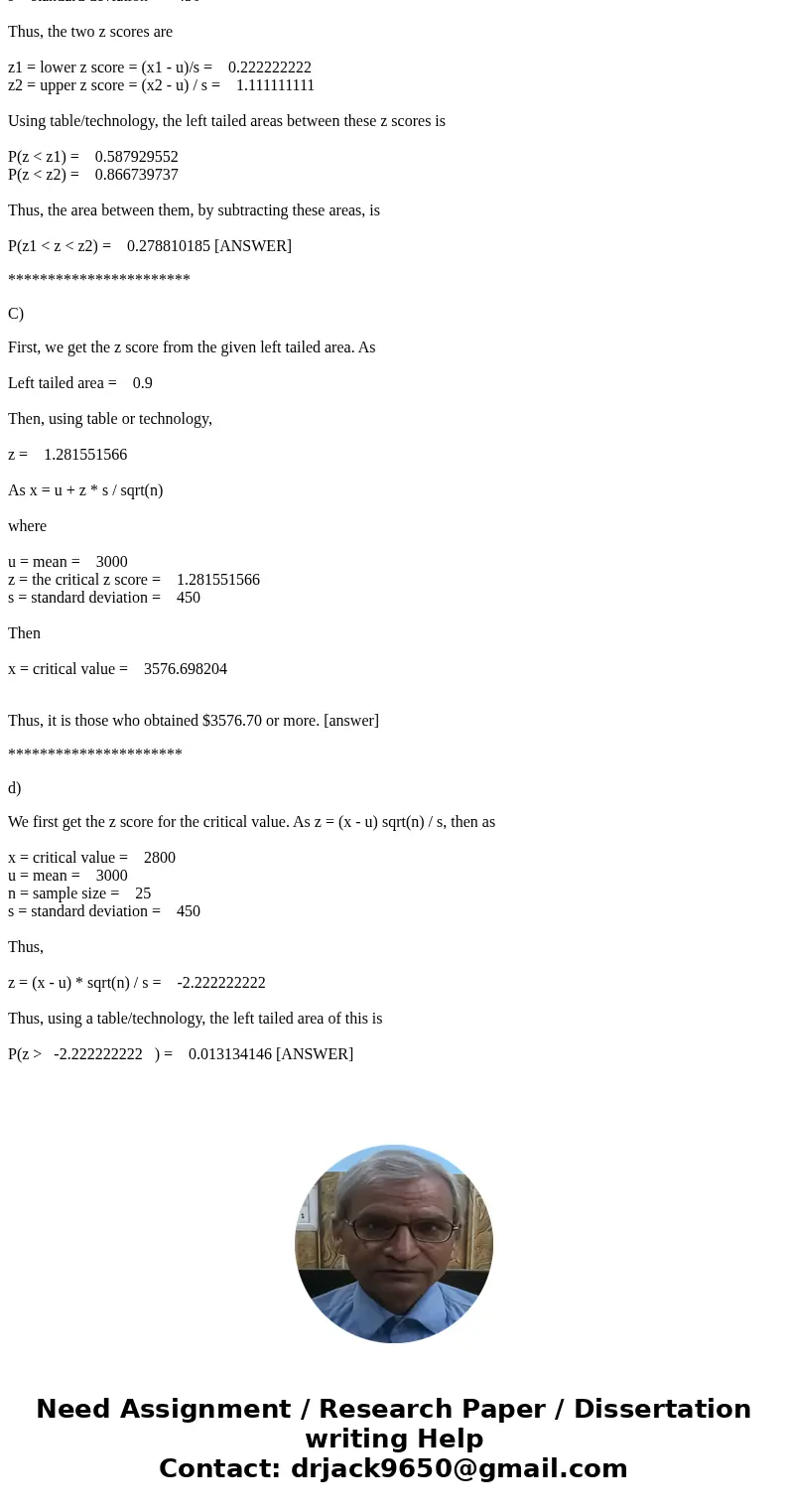According to the IRS the mean tax refund for the year 2013 w
According to the IRS, the mean tax refund for the year 2013 was $3,000. Assume that the standard deviation is $450 and that amounts refunded follow a normal probability distribution.
A) What is the probability that a refund is more than $3,100?
B) What proportion of the refunds are more than $3,100 but less than $3,500?
c) What refund amount corresponds to that obtained by the 10% of taxpayers who receive the largest refunds?
D) In a random sample of 25 refunds, what is the probability that the mean refund would be less than $2,800?
(Please post solutions with steps on how you got to the answer)
Solution
a)
We first get the z score for the critical value. As z = (x - u) sqrt(n) / s, then as
x = critical value = 3100
u = mean = 3000
s = standard deviation = 450
Thus,
z = (x - u) / s = 0.222222222
Thus, using a table/technology, the right tailed area of this is
P(z > 0.222222222 ) = 0.412070448 [answer]
**********
b)
We first get the z score for the two values. As z = (x - u) sqrt(n) / s, then as
x1 = lower bound = 3100
x2 = upper bound = 3500
u = mean = 3000
s = standard deviation = 450
Thus, the two z scores are
z1 = lower z score = (x1 - u)/s = 0.222222222
z2 = upper z score = (x2 - u) / s = 1.111111111
Using table/technology, the left tailed areas between these z scores is
P(z < z1) = 0.587929552
P(z < z2) = 0.866739737
Thus, the area between them, by subtracting these areas, is
P(z1 < z < z2) = 0.278810185 [ANSWER]
***********************
C)
First, we get the z score from the given left tailed area. As
Left tailed area = 0.9
Then, using table or technology,
z = 1.281551566
As x = u + z * s / sqrt(n)
where
u = mean = 3000
z = the critical z score = 1.281551566
s = standard deviation = 450
Then
x = critical value = 3576.698204
Thus, it is those who obtained $3576.70 or more. [answer]
**********************
d)
We first get the z score for the critical value. As z = (x - u) sqrt(n) / s, then as
x = critical value = 2800
u = mean = 3000
n = sample size = 25
s = standard deviation = 450
Thus,
z = (x - u) * sqrt(n) / s = -2.222222222
Thus, using a table/technology, the left tailed area of this is
P(z > -2.222222222 ) = 0.013134146 [ANSWER]


 Homework Sourse
Homework Sourse